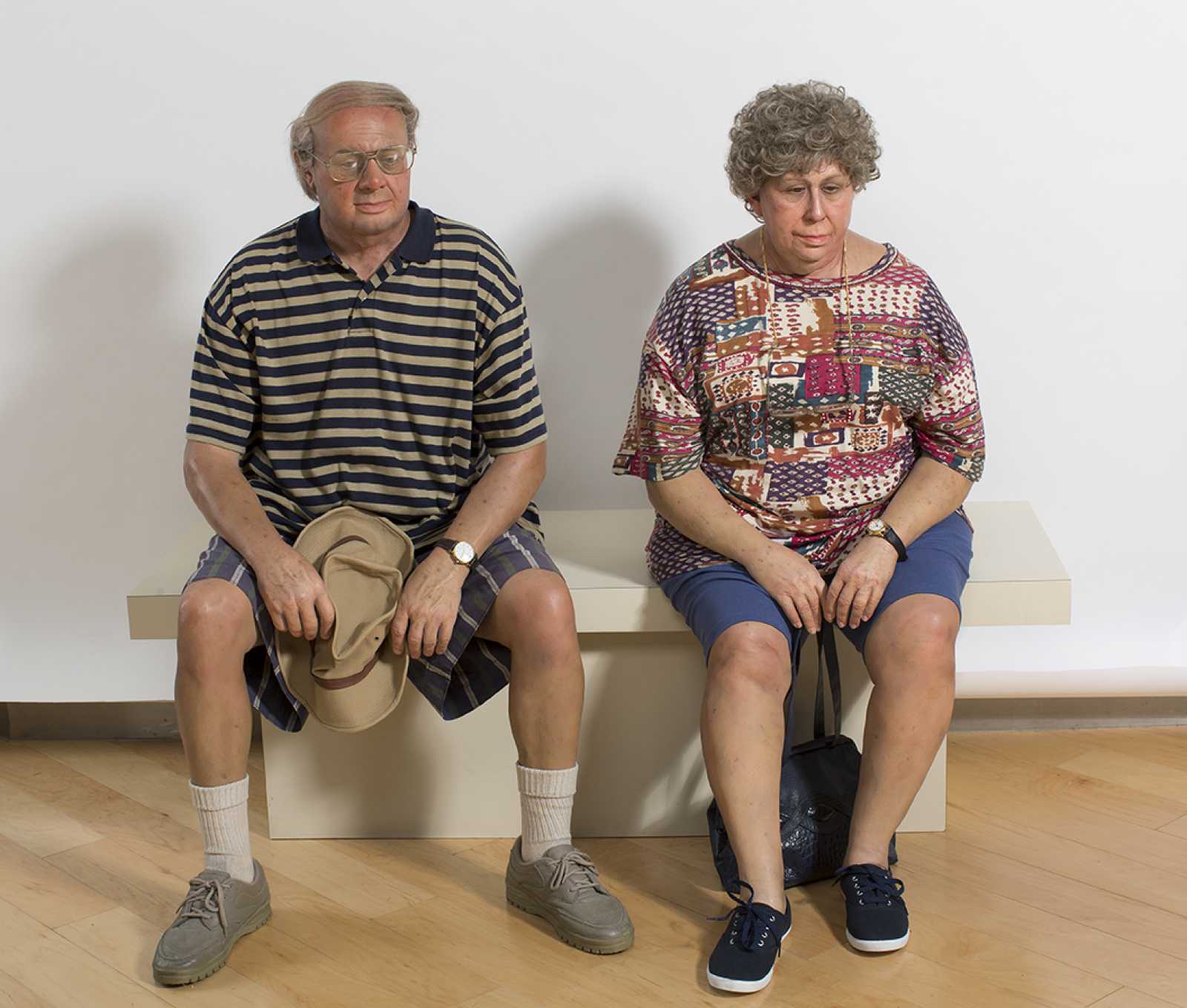Duane Hanson
Duane Hanson’s highly realistic life-sized figurative sculptures depict stereotypical Americans notable for their utter ordinariness. Cast from life, his artworks are often mistaken for actual people in a museum or gallery setting. “I thought she was real!” is the comment typically heard when viewers realize they have been fooled by Hanson—creating for viewers and others feelings of surprise, amusement, embarrassment, and sympathy. Hanson’s exceptional realism developed within the context of Pop Art’s focus on the commonplace and Photorealism’s preference for the lifelike. His work is indebted, as well, to the Duchampian readymade in terms of his integration of found objects into art. Cast in fiberglass and polyester resin, his figures are dressed in real clothes, adorned with glasses and accessories sourced in shops, and set in tableaux filled with props to create realistic scenarios.
Hanson received a BA from Macalester College in St. Paul, Minnesota in 1946 and completed an MFA in sculpture at Cranbrook Academy of Art in Bloomfield Hills, Michigan in 1951. He lived in many locations, including Germany and New York, before locating permanently in South Florida for the remainder of his career. His early work in the 1960s had political themes, taking on subjects including war and homelessness. Over time, his focus shifted to looking at the American working class—housewives, repairmen, office cleaners, dishwashers, museum guards, and janitors—figures who are often overlooked in society.
Duane Hanson (American, 1925-1996), Old Couple on a Bench, 1995, polychromed bronze and mixed media with accessories, edition 2/2, 50 x 60 x 40 ¾ inches. Museum purchase with funds provided by Muriel and Bernard Myerson, 2-1998 a-c.
Sam Maloof
Sam Maloof, an influential pioneer of modern furniture, was a master woodworker whose handcrafted furniture is prized for its simplicity, practicality, craftsmanship, and modern sensibility. Throughout his sixty-year career, he approached design consistently, employing articulated joinery, organic forms, and a devotion to swooping lines. The sensuous curves and elongated rockers in Walnut Rocking Chair with Ebony Accents No. 38 look sculptural, like an archer’s bow, while functioning to keep the chair from tipping over. Maloof’s designs were hand-sketched, and he was involved in all aspects of the construction process, adjusting aspects of his furniture by look, not measurement. As a result, each piece is unique. A signature aspect of Maloof’s work is the sleek surface, achieved by leaving a mixture of linseed oil, tung oil, and beeswax on the wood’s surface for multiple days before polishing. Due to his meticulous workmanship, Maloof’s output remained small, producing an average of 80 pieces per year and creating long waiting lists for his designs.
Born in Chino, California, Maloof started designing and making custom furniture in the 1950’s after studying woodworking in high school in Ontario. He began his career by creating furniture with plywood and recycled wood pallets to furnish a house he and his wife bought without the money to buy furniture. Maloof came to prominence in the postwar era of minimalist architecture when mass production was often privileged over handcraft. In spite of this, his handcrafted walnut chairs and bar stools were selected to furnish several of the Case Study Houses—the modernist, experimental homes in the Southern California area that included designs by Richard Neutra, Charles Eames and Ray Eames, Eero Saarinen, and other progressive architects between 1945 and 1966. In 1985, Maloof became the first craftsman to be recognized with a MacArthur “genius” grant, and he received honorary doctorates from the Rhode Island School of Design, Aurora University in Illinois, and California State University, San Bernardino.
Sam Maloof (American, 1916-2009), Walnut Rocking Chair with Ebony Accents No. 38, 1985, walnut with ebony accents, 46 × 27 × 46 inches. Gift of Elaine B. Scheider and Harold Bishop, 39-2010.


